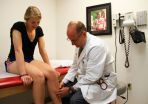(Press-News.org) (BOSTON) - Antibiotics are the mainstay in the treatment of bacterial infections, and together with vaccines, have enabled the near eradication of infectious diseases like tuberculosis, at least in developed countries. However, the overuse of antibiotics has also led to an alarming rise in resistant bacteria that can outsmart antibiotics using different mechanisms. Some pathogenic bacteria are thus becoming almost untreatable, not only in underdeveloped countries but also in modern hospital settings.
While some researchers seek to develop antibiotics with new mechanisms of actions, others are trying to understand how antibiotics function so that they can devise ways to make them work better.
In principle, antibiotics suppress infections either by killing the bacteria, which is called a bactericidal effect or by merely inhibiting their growth, by what is called a bacteriostatic effect. After the treatment has been stopped, growth-inhibited bacteria, however, can re-emerge from their dormancy to start multiplying again with latent infections relapsing back into full-blown attacks.
Now, in a new study, published online on June 22 in the Proceedings of the National Academy of Sciences, a team at Harvard's Wyss Institute for Biologically Inspired Engineering led by Wyss Core Faculty member James Collins, Ph.D., pinpoints a critical differentiator that separates the effects of bactericidal and bacteriostatic antibiotics: cellular respiration. This metabolic process uses oxygen under aerobic conditions to convert energy stored in nutrients into ATP, the main energy currency used by all cells.
"It was known for a while that some bactericidal antibiotics put bacterial respiration into over-drive, which, by producing too many oxygen radicals, becomes toxic to the pathogens. We wanted to zero in on these bacterial responses and decided to systematically investigate respiration levels in bacteria treated with a larger spectrum of bacteriacidal and bacteriostatic antibiotics," said Michael Lobritz, the study's first author who is a Wyss Institute Clinical Fellow, an instructor at Harvard Medical School, and an infectious disease physician at the Massachusetts General Hospital (MGH).
To begin, Lobritz and his colleagues measured cellular respiration levels in bacterial cultures that were untreated, as well as cultures that were treated with both kinds of antibiotics. The results were clear-cut: in agreement with earlier observations, bactericidal antibiotics generally accelerated respiration activity and produced a toxic overflow in energy production. Surprisingly, however, the team found that bacteriostatic antibiotics worked in quite the opposite way on cellular respiration, they slowed down oxygen consumption and energy production.
Since in clinical practice antibiotics are often administered in combinations to enhance efficacy and the spectrum of targeted pathogens, the team surveyed how combinations of different antibiotics affect cellular respiration. As it turned out, bacteriostatic respiratory outcomes always dominated meaning that the net effect always is a reduction in cellular respiration. As a result, bactericidal effects get eliminated in the mix and the pathogenic bacteria become tolerant.
"Adding bacteriostatic antibiotics to a combination induces bacterial tolerance to the bacteriocidal treatment. This could help explain why certain antibiotic therapies do not work. Elucidating the pathways that mediate changes in respiration triggered by specific antibiotics could lead to new potential drug targets that may help achieve the same result in infected patients," said Collins.
The team backed up and expanded their findings with genetic evidence: deletion of bacterial genes responsible for cellular respiration and energy production prevented killing by bactericidal antibiotics. Conversely, deletion of a gene that helps coupling oxygen consumption with energy production artificially ramped up respiration rates and at the same time boosted killing of bacteria treated with bactericidal antibiotics. "These results identify the acceleration of cellular respiration as a means to enhance the activity of existing antibiotics," said Lobritz.
According to Collins, "these findings are only the beginning. They show that better combinations of antibiotics are possible. But ultimately we want to gain deeper insight into the antibiotic modes of action affecting cellular respiration so we can identify better antibiotics to help treat infections." Collins is also the Termeer Professor of Medical Engineering & Science at Massachusetts Institute of Technology (MIT) and a Professor of Biological Engineering at MIT.
"Given the alarming increase in infections caused by multi-drug resistant bacteria, the team's findings provide an entirely new strategy for development of urgently needed therapeutics," said Wyss Institute Founding Director Donald Ingber, M.D., Ph.D., who is also the Judah Folkman Professor of Vascular Biology at Harvard Medical School and Boston Children's Hospital and Professor of Bioengineering a the Harvard John A. Paulson School of Engineering and Applied Sciences.
INFORMATION:
COLUMBUS, Ohio - A new study performed by researchers at The Ohio State University Wexner Medical Center shows that when it comes to overuse injuries in high school sports, girls are at a much higher risk than boys. Overuse injuries include stress fractures, tendonitis and joint pain, and occur when athletes are required to perform the same motion repeatedly.
The study published in April in the Journal of Pediatrics. Dr. Thomas Best analyzed 3,000 male and female injury cases over a seven year period across 20 high school sports such as soccer, volleyball, gymnastics ...
PITTSBURGH, June 24 -- Moving closer to the possibility of "materials that compute" and wearing your computer on your sleeve, researchers at the University of Pittsburgh Swanson School of Engineering have designed a responsive hybrid material that is fueled by an oscillatory chemical reaction and can perform computations based on changes in the environment or movement, and potentially even respond to human vital signs. The material system is sufficiently small and flexible that it could ultimately be integrated into a fabric or introduced as an inset into a shoe.
Anna ...
Researchers from the University of Illinois at Urbana-Champaign have, for the first time, uncovered the complex interdependence and orchestration of metabolic reactions, gene regulation, and environmental cues of clostridial metabolism, providing new insights for advanced biofuel development.
"This work advances our fundamental understanding of the complex, system-level process of clostridial acetone-butanol-ethanol (ABE) fermentation," explained Ting Lu, an assistant professor of bioengineering at Illinois. "Simultaneously, it provides a powerful tool for guiding strain ...
Alexandria, VA - Humans depend on copper for everything from electrical wiring to water pipes. To meet demand, the metal has been largely mined from Porphyry Copper Deposits (PCDs). For decades, scientists generally agreed upon the geological processes behind PCD formation; now EARTH Magazine examines two new studies that suggest alternatives to these long-held understandings.
From enriched pulses of magmatic fluids creating copper concentrations, to remelted crust allowing deeper PCDs to rise up to shallower depths, these conclusions may better inform geologists about ...
Amsterdam, NL, June 24, 2015 - Despite an urgent need for new medications, clinical trials in Parkinson's disease (PD) have a relatively low rate of success. The reasons for this are complex, prompting a group of investigators from PD advocacy groups to conduct a survey of the principle stakeholders, PD scientists, patients, and caregivers, to determine some of the underlying barriers. Their results are published in the Journal of Parkinson's Disease.
"With development of a new drug estimated to cost between $1 and $3 billion and taking as long as 15 years, the successful ...
Cultural "lore" outweighs criminal law when Indigenous drivers in regional and remote communities get behind the wheel drunk, a new study by Queensland University of Technology has found.
Michelle Fitts, from QUT's Centre for Accident Research & Road Safety-Queensland (CARRS-Q), said the decision to drink drive was not necessarily made in disregard for criminal law but rather to meet cultural obligations.
As part of her Ph.D., Fitts explored the motivations that influence Indigenous people to drink drive in regional and remote communities through one-on-one interviews ...
Researchers from North Carolina State University have developed a new technique for "scheduling" energy in electric grids that moves away from centralized management by tapping into the distributed computing power of energy devices. The approach advances the smart grid concept by coordinating the energy being produced and stored by both conventional and renewable sources.
Currently, power infrastructure uses a centralized scheduling approach to forecast and coordinate the energy produced at the thousands of large power plants around the country. But as renewable energy ...
Research has shown that New Zealand blackcurrants are good for keeping us mentally young and agile, a finding that could have potential in managing the mental decline associated with aging populations, or helping people with brain disorders such as Parkinson's disease or depression.
The research, conducted by scientists at Plant & Food Research (New Zealand) in collaboration with Northumbria University (UK), showed that compounds found in New Zealand blackcurrants increased mental performance indicators, such as accuracy, attention and mood. The study also showed that ...
Although minority children are frequently reported to be overrepresented in special education classrooms, a team of researchers suggests that minority children are less likely than otherwise similar white children to receive help for disabilities.
The previously reported overrepresentation is most likely due to a greater exposure to environmental and economic risk factors, said Paul Morgan, associate professor of education, Penn State.
"The general limitation of the available studies is that they haven't been able to correct for minority children's unfortunate, but ...
Scientists at Sweden's Karolinska Institutet have managed to build a fully functional neuron by using organic bioelectronics. This artificial neuron contain no "living" parts, but is capable of mimicking the function of a human nerve cell and communicate in the same way as our own neurons do.
Neurons are isolated from each other and communicate with the help of chemical signals, commonly called neurotransmitters or signal substances. Inside a neuron, these chemical signals are converted to an electrical action potential, which travels along the axon of the neuron until ...

